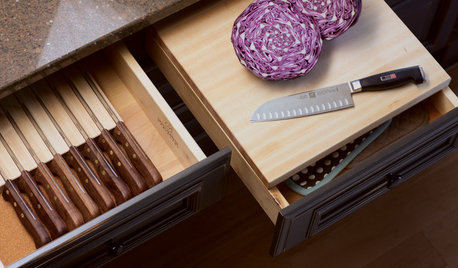Need roofing advice - PLEASE!!
lesliew
19 years ago
Related Stories

DECORATING GUIDES10 Design Tips Learned From the Worst Advice Ever
If these Houzzers’ tales don’t bolster the courage of your design convictions, nothing will
Full Story
HEALTHY HOMEHow to Childproof Your Home: Expert Advice
Safety strategies, Part 1: Get the lowdown from the pros on which areas of the home need locks, lids, gates and more
Full Story
FARM YOUR YARDAdvice on Canyon Farming From L.A.'s Vegetable Whisperer
See how a screened garden house and raised beds help an edible garden in a Los Angeles canyon thrive
Full Story
TASTEMAKERSBook to Know: Design Advice in Greg Natale’s ‘The Tailored Interior’
The interior designer shares the 9 steps he uses to create cohesive, pleasing rooms
Full Story
Straight-Up Advice for Corner Spaces
Neglected corners in the home waste valuable space. Here's how to put those overlooked spots to good use
Full Story
LIFEGet the Family to Pitch In: A Mom’s Advice on Chores
Foster teamwork and a sense of ownership about housekeeping to lighten your load and even boost togetherness
Full Story
KITCHEN DESIGNSmart Investments in Kitchen Cabinetry — a Realtor's Advice
Get expert info on what cabinet features are worth the money, for both you and potential buyers of your home
Full Story
REMODELING GUIDESContractor Tips: Advice for Laundry Room Design
Thinking ahead when installing or moving a washer and dryer can prevent frustration and damage down the road
Full Story
KITCHEN STORAGEKnife Shopping and Storage: Advice From a Kitchen Pro
Get your kitchen holiday ready by choosing the right knives and storing them safely and efficiently
Full Story
BATHROOM DESIGNDreaming of a Spa Tub at Home? Read This Pro Advice First
Before you float away on visions of jets and bubbles and the steamiest water around, consider these very real spa tub issues
Full Story







Carol_from_ny
housekeeping
Related Professionals
Brownsville Kitchen & Bathroom Designers · Carson Kitchen & Bathroom Designers · Rancho Mirage Kitchen & Bathroom Designers · Saint Peters Kitchen & Bathroom Designers · Winton Kitchen & Bathroom Designers · Deerfield Beach Kitchen & Bathroom Remodelers · Durham Kitchen & Bathroom Remodelers · Gardner Kitchen & Bathroom Remodelers · Idaho Falls Kitchen & Bathroom Remodelers · Mesquite Kitchen & Bathroom Remodelers · Lawndale Kitchen & Bathroom Remodelers · Plant City Kitchen & Bathroom Remodelers · Asbury Park Architects & Building Designers · Memphis Architects & Building Designers · Ronkonkoma Architects & Building DesignersCowCrazy166
mrblandings
alisande
DruidClark
lesliewOriginal Author
DruidClark
coleyspirit9_aol_com
SuzyQ2
brickeyee